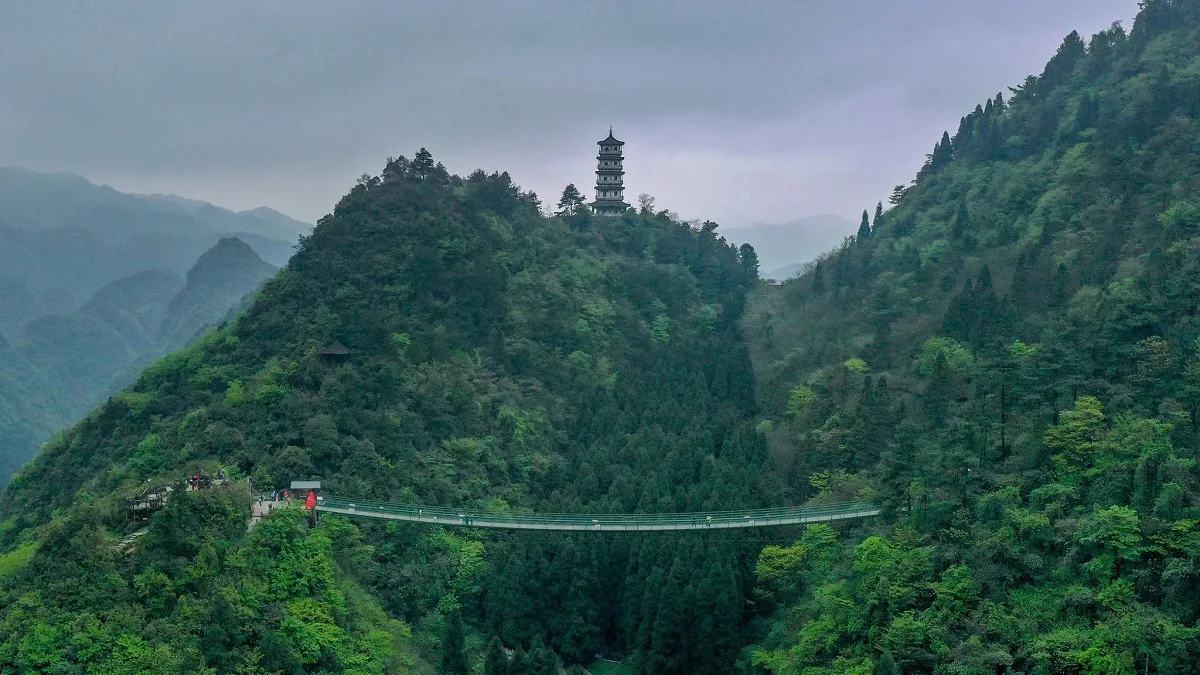Loushan Pass (娄山关), also known as Louguan or Taiping Pass, is the main peak of the Dalou Mountain Range, located at the border of Zunyi and Tongzi counties. Surrounding the Loushan Pass are cliffs and precipices, with peaks reaching heights of 1400 to 1600 meters, making it exceptionally perilous. It is famously described as “one man holds the pass, ten thousand cannot pass.” Due to its strategic location, serving as the gateway to Sichuan in the north and controlling the access to Guizhou and Guangxi in the south, Loushan Pass has been a crucial military position throughout history.
In February 1935, during the Long March, the Chinese Workers’ and Peasants’ Red Army, led by the First Front Army, crossed the Chishui River for the second time and returned to northern Guizhou. They defeated four regiments of the Guizhou Army, captured Loushan Pass, and initiated the Battle of Zunyi, marking their first significant victory since the start of the Long March. This victory signaled the beginning of the Zunyi Conference and demonstrated the resilience of the Red Army. Since then, Loushan Pass, where the Red Army fought, has become a famous revolutionary memorial site in northern Guizhou.
Table of Contents
- Basic Information
- Location and Transportation
- Map of Loushan Pass
- Highlights of Loushan Pass
- Vlog about Loushan Pass
Basic Information
| Estimated Length of Tour | 2 hours |
| Ticket Price | Free |
| Opening Hours | 9.00 – 18.00 |
| Telephone Number | 0086-0851-28795555 |
Location and Transportation
Loushan Pass is situated at the border of Banqiao Town in Huichuan District, Zunyi City, Guizhou Province, and Loushan Pass Street in Tongzi County. To reach Loushan Pass, tourists can take a bus from Maocaopu Passenger Station(茅草铺客运站) in Zunyi to Tongzi County and disembark at Loushan Pass.
Map of Loushan Pass

Highlights of Loushan Pass
Xifeng Platform: Standing at the highest point of the Loushan Pass scenic area, Xifeng Platform offers breathtaking panoramic views. At an elevation of 1779 meters, it is an ideal spot to witness both sunrise and sunset, providing visitors with unforgettable experiences of nature’s beauty.
Monument of Chairman Mao’s Poetry: This monument features an inscription of Chairman Mao Zedong’s handwritten poem “Remembering Qin’e · Loushan Pass.” The monument, measuring 25 meters in length and 13.55 meters in height, is adorned with protective walls and planted with pine and cypress trees, creating a serene atmosphere.
Gateway Inscription: Carved into the rock face at the pass entrance are the three characters “Loushan Pass (娄山关)” in Yan style calligraphy, each measuring 2.3 meters in diameter. Inscribed by Shu Tong, former chairman of the Chinese Calligraphers Association, in 1984, these characters exude strength and vitality.
Changkong Bridge: Spanning 100 meters in length and 5 meters in width, Changkong Bridge hangs approximately 60 meters above the ground, offering visitors a thrilling aerial perspective of Loushan. With its iron cables connecting the bridge, it provides both a picturesque and adventurous experience.
Hundred Battles Staircase: Comprising 365 steps, the Hundred Battles Staircase is adorned with sculptures and reliefs depicting the famous battles and victories that occurred at Loushan Pass. It serves as a vivid portrayal of historical events and revolutionary struggles.
Loushan Pass Battle Site Exhibition Hall: Covering an area of approximately 6000 square meters, this exhibition hall adopts a sunken architectural style. Inside, visitors can explore exhibits featuring sculptures of revolutionary heroes and historical photographs, providing insights into the region’s rich history.
Poetry and Literature Museum: Housing over seventy poems written by Chairman Mao Zedong, the Poetry and Literature Museum offers visitors the opportunity to immerse themselves in the literary legacy of the revolutionary era.


